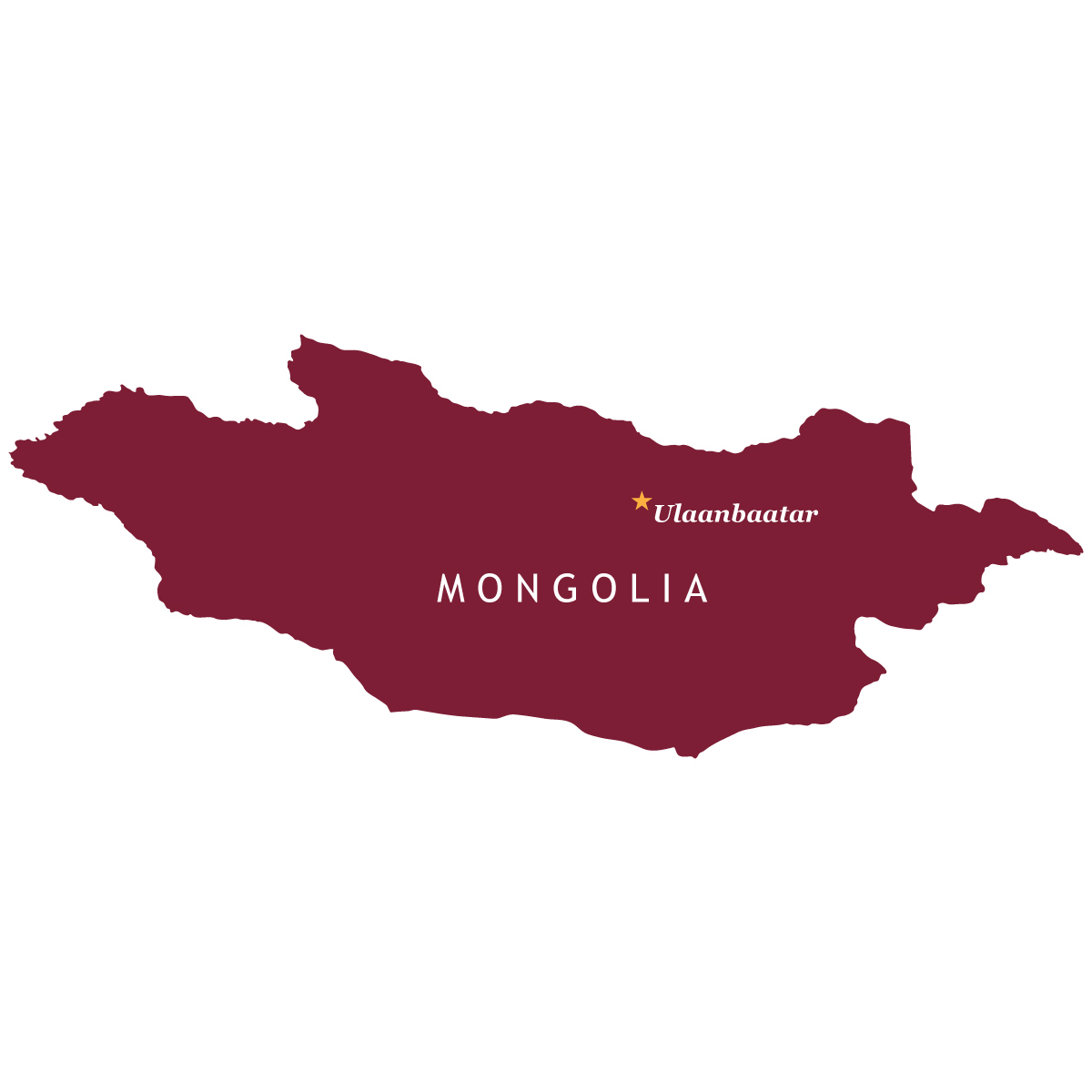
Mongolia
Home to the largest empire that the world has ever known, Mongolia has a unique nomadic culture that is expressed through art, music, dance, and cuisine. Grab your kids and let’s learn about Mongolia!
QUICK STATS
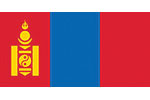
Located in East Asia, Mongolia is a landlocked country. It borders China to the south and Russia to the north. Much of the area is covered by grassy steppes, with mountains to the north and west and the Gobi desert to the south.
A brief history for kids to learn about Mongolia
Mongolia has been inhabited by humans for more than 20,000 years. Through the centuries, groups of nomads rose to power and imposed a political system, consisting of the Khan (leader), Kurultai (supreme council), etc. The first of such empires was the Xiongnu, a tribal confederation formed in 209 BC. Soon enough, the Xiongnu became a threat to the Chinese Qin Dynasty. As a result, the Qin Dynasty built The Great Wall of China, to avoid invasions from the Xiongnu.
After the Xiongnu collapsed, the Xianbei Empire ruled between 93–234 AD, gaining sovereignty over an area larger than present-day Mongolia.
In the next thousand years, various rulers from Kyrgyz, Uyghurs, and Khitan Mongol origins governed Mongolia’s land.
In the late 12th century, a chieftain named Temüjin rose to power and united the Mongol tribes between the Altai Mountains and Manchuria. Temüjin took the title of Genghis Khan, and after years of brutal military campaigns conquered most of Asia. This Mongol Empire was the largest contiguous land empire in history, covering approximately 33,000,000 square kilometers (13,000,000 sq mi).
After Genghis Khan’s death, the Mongol empire was divided into four kingdoms, which became quasi-independent after the Toluid civil war in the 13th century.
One of the kingdoms, “The Great Khanate”, consisted of Mongolia and most of modern-day China. It became known as the Yuan Dynasty, with its capital set in Beijing. A century later, the Chinese Ming Dynasty reconquered China, and the Yuan Dynasty fled North.
In the late 16th century, after meeting the Dalai Lama, the Mongol Khan embraced Tibetan Buddhism. As a result, most of the Mongol tribes in the area converted.
In the 17th century, the tribes of Inner Mongolia (currently an autonomous region of the People’s Republic of China) submitted to the Chinese Qing Dynasty. A few decades later, the Qing conquered the remaining portion of Mongolia.
Mongolia in more recent history
After the fall of the Qing Dynasty in 1911, China’s rule over Outer Mongolia seemed invalid from an international standpoint. After a decade of war between Chinese and Russian forces over the land, Outer Mongolia declared its independence in 1921.
They aligned their political system with the Soviet Union for the next 70 years. This affected the conservation of Mongol culture, destroyed many Buddhist monasteries, as well as prompted the execution of many leaders who opposed Stalin’s “Red Terror”.
The fall of the Soviet Union in 1991 resulted in the Introduction of a multi-party system in Mongolia, as well as a gradual transition to a market economy.
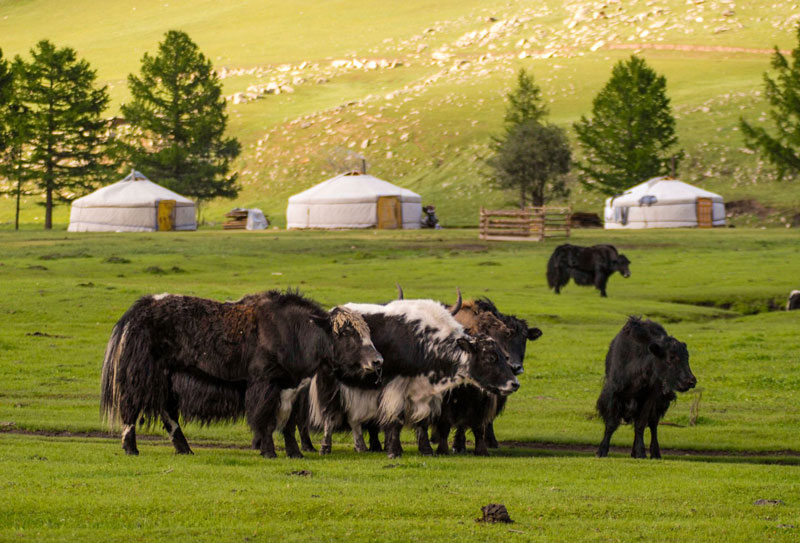
Fun facts about Mongolia for kids
- While Mongolian winter can easily reach temperatures as low as -30 degrees Celsius (-22 degrees Fahrenheit), ice cream is a favored winter treat amongst many Mongolians. Funnily enough, ice cream vendors on the streets don’t even need to use a freezer during these cold months.
- The Gobi Desert is located in western Mongolia and it is the biggest desert in Asia. Due to numerous paleontological discoveries from the dinosaur era, the Gobi desert is also known as the world’s largest dinosaur fossil reserve.
- Horse-riding nomadism has been a part of Mongolian culture for thousands of years. Today, there are 13 times more horses in Mongolia than humans.
Mongolian food
To understand Mongolian cuisine, we must understand Mongolian culture and the geography of the land. Mongolia holds on to a long nomadic heritage. This means that during most of history, farmland agriculture was not common. Because of this, there is extensive use of meat and dairy products in Mongolian cuisine. Fermentation and drying techniques of meat and dairy are also very common.
Mongolia’s climate tends to be extremely cold during winter. As a result, vegetables and spices are not commonly found in the cuisine.
Due to Mongolia’s proximity to China and Russia, they have adopted many dishes and cooking techniques from Russian and Northern Chinese traditions, such as Buuz dumplings and Khorkhog meat stew.

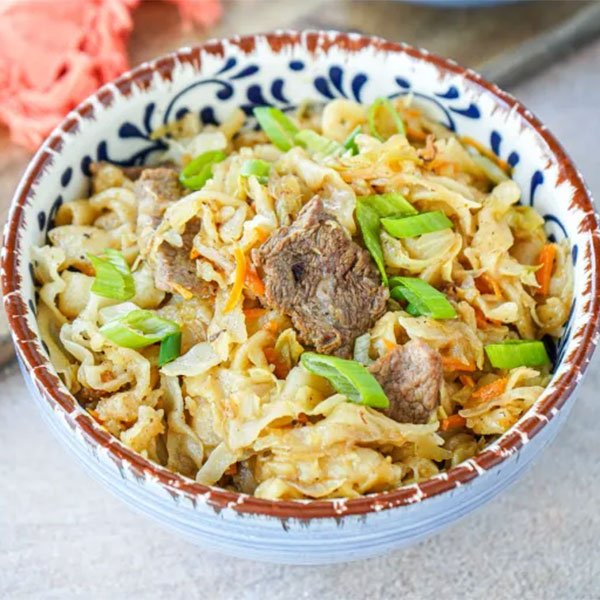
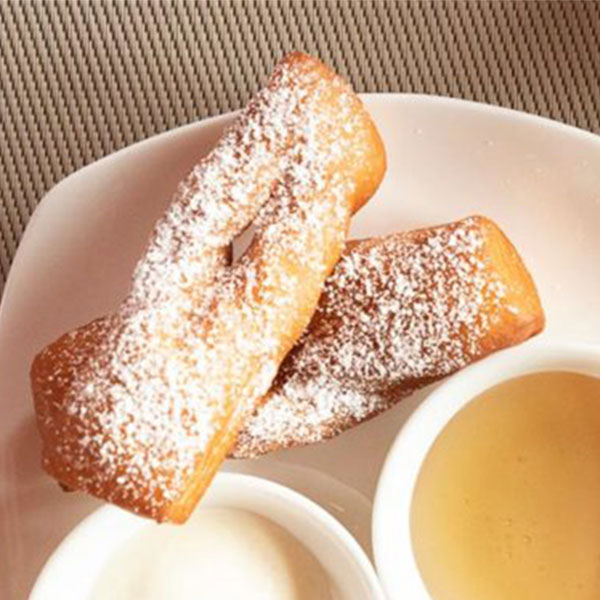
What do Mongolians eat? Mealtime in Mongolia.
Meat and dairy products are the main components of the Mongolian diet, as vegetables and grains are harder to grow. You can divide most Mongolian cuisine into white foods or red foods. White foods are dairy: cream, butter, dried cheeses, and yogurt. Red foods are meat-based, including soups, dumplings, and dried meats. Commonly people eat red foods in winter and white foods in summer.
Due to cold and long winters, Mongolian cuisine has a great variety of soups and porridges.
Hot tea with milk and salt (and sometimes butter) is an inseparable part of Mongolian’s daily routine. Mutton, dumplings, and soup are considered staples in Mongolian cuisine and tend to be served at every meal, in some way or another.
Breakfast (7-8 am)
Mongolians tend to eat breakfast mid-morning as a break from their work.
While in the capital city, you may find more European or American breakfast items, a herder’s breakfast is typically heavy on dairy products.
Breakfast nearly always is accompanied by a traditional salty milk tea, suutei tsai. They will often stir millet into the tea to increase the caloric intake.
You often find bread and dairy products for breakfast. Dairy items may include aaruul, a dried cheese, and clotted cream.
Cattle aren’t very well suited for the steppes of Mongolia, so yaks are the animal of choice. You will find rich yack yogurt and yack butter common.
Boortsog, a fried butter cookie, are very common for a quick breakfast. Mongolians commonly eat these dipped in their tea (suutei tsai).
This video takes a look at a typical Mongolian breakfast in a ger (a Mongolian traditional tent).
Lunch (1-2 pm)
Mutton, dumplings, or noodle dishes are a few popular options for lunch in Mongolia. You will often find airag, fermented horse milk, served as a palate cleanser.
Budaatai huurga is a fried rice, meat, and vegetable meal often eaten for lunch or dinner.
Dinner (7-8 pm)
Mongolians typically enjoy dinner with family or friends. Some Mongolians only eat one main meal, and simply sip on suutei tsai throughout the day for sustenance.
For dinner, you will find meat dishes like khorkhog (real Mongolian barbeque cooked with hot stones in a larger vessel), or noodle dishes like tsuvian or guriltai shul.
(IMAGE – buuz dumplings CANVA image or tsuvian Tara’s Multicultural Table)
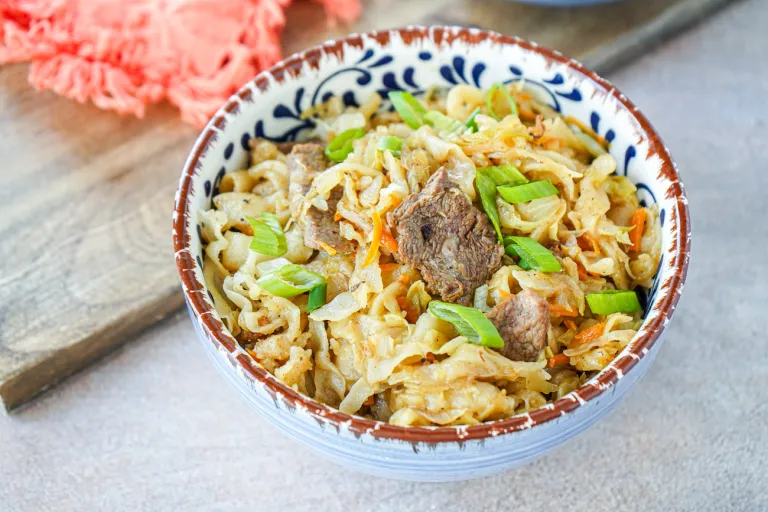
Food etiquette in Mongolia
When handed a dish in Mongolia it is polite to accept it with both hands or just your right hand. Often you will use the same bowl for tea before the meal, your meal, and tea after the meal.
Dumplings you can eat with your hands. But soups or noodle dishes you will want to eat with chopsticks or forks, depending on the preferences of the family you are eating with.
Only accept as much food as you can eat. Wasting food is bad manners. However, it is acceptable to leave a little food on your plate at the end of the meal, as a sign that you enjoyed the meal but are full.
Hospitality is highly revered in Mongolian culture. When entering a ger, the family will often offer a guest some milk tea, as well as a plate of various cheeses, bread, or cookies. It is expected the guest will eat at least a few bites and sip from the tea. Doing otherwise is considered rude.
Mongolian food by region
Due to a large urbanization process that has been taking place in Mongolia for recent decades, urban Mongolian cuisine highly differs from the culinary traditions of the rural areas.
In addition, despite modern land division, Outer Mongolia and Inner Mongolia (nowadays an autonomous region of the People’s Republic of China) share the same culture and culinary heritage. When learning about Mongolia with kids, it may be helpful to address each region briefly to get a more clear understanding of the cuisine.
Urban Cuisine
Mongolia’s capital and largest city, Ulaanbaatar, has been developing a unique culinary scene that combines years-old nomadic traditions with international techniques and ingredients.
While meat and dairy are the main components of rural Mongolian cuisine (dishes such as roasted mutton and fermented horse milk), vegetables and rice are quite common in Mongolia’s urban cuisine. In addition, here you will find more European and American ingredients and dishes.
One of Ulaanbaatar’s specialties is tsuvian, a dish of fried noodles that they serve with meat (usually mutton) and vegetables (like cabbage, carrots, and potato).
Outer Mongolia
Mongolians are known for their affinity for dumplings (buuz, kuushuur, and more). Steamed or fried, and always filled with some sort of meat.
Khuushuur are flat, fried dumplings stuffed with meat, onions, and garlic, while buuz are steamed or fried and filled with meat.
In addition, another Outer Mongolian specialty is khorkhog, a hearty barbequed meat dish where meat is layered with vegetables in a lidded cooking vessel and cooked for hours with hot stones.
Inner Mongolia
Due to its proximity to the People’s Republic of China, Inner Mongolian cuisine is a unique meshing of the two cultural traditions.
Here you will find many noodle dishes using menmian (noodles) as well as dumplings, shumai.
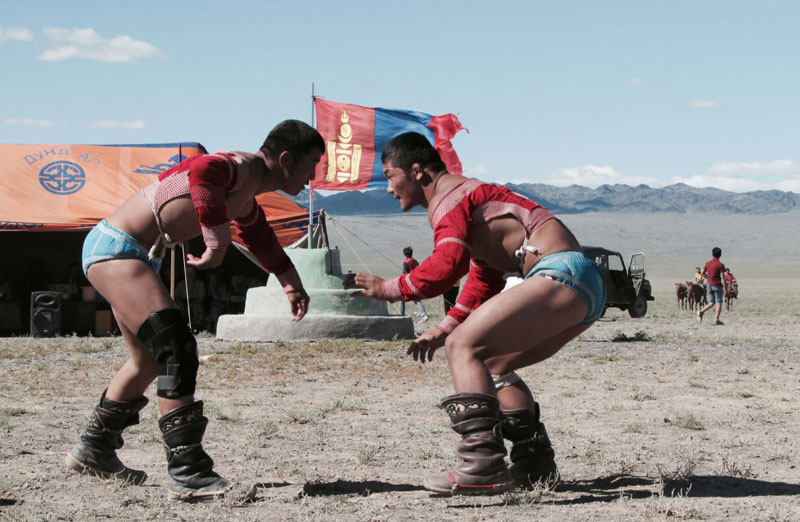
Holidays in Mongolia
Discussing holidays is a great way for kids to learn about Mongolia. Mongolians celebrate many national holidays and festivals, as well as some festivals and special occasions that you only find in specific areas in Mongolia.
Mongolians celebrate their holidays not only by gathering, singing, and dancing but also by cooking unique dishes that have symbolic meanings to them.
Naadam (July)
Naadam is a national festival celebrated every year in mid-July. It is one of Mongolia’s largest annual events.
The name ‘Naadam’ means “games” in Mongolian. The festival includes three traditional competitions: horseracing, wrestling, and archery.
In the past, Naadam used to take place before and after major battles, as an ancient practice of Mongolian war culture.
Kuushuur fried dumplings are common during the Nadam festivals.
Tsagaan Sar (Mongolian Lunar New Year) (January/February)
Mongolians celebrate Tsagaan Sar for three days in January or February. It marks the transition between winter and spring.
Buuz are traditional Mongolian mutton dumplings, and as they symbolize health and wealth, every family makes several hundred to several thousand units of buuz every year for Tsagaan Sar!
Golden Eagle Festivals (October)
Despite Mongolia’s population being almost entirely Mongolian in ethnicity, the province of Bayan-Ölgii (around 1600 km from the capital of Ulaanbaatar) is home to the Mongolian Kazakh community.
The Golden Eagle festival is celebrated every October in Bayan-Ölgii. The Kazakhs of this region celebrate old nomadic traditions by competing in hunting skills, assisted by trained eagles. Judges award prizes for accuracy and speed as well as for the best traditional Kazakh dress.
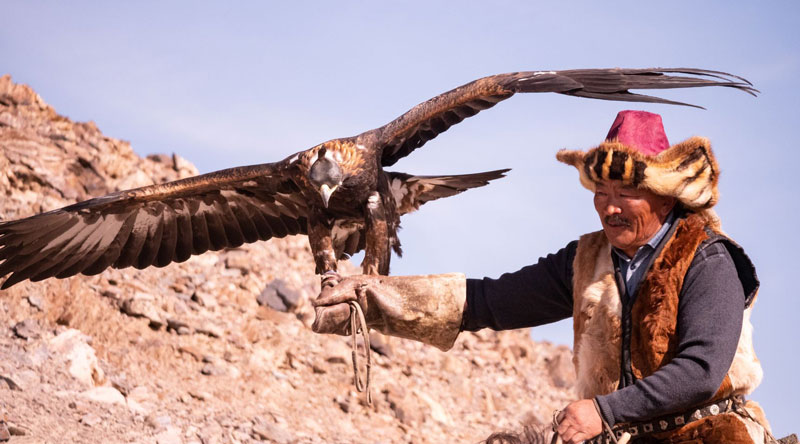
At-home ideas for kids to learn about Mongolia
As a part of your home-school Mongolia unit study or as a supplement to your child’s Asia unit at school, try some of these ideas at home.
- Mongolia is home to one of the world’s most excavated dinosaur fossil reserves, located in the Gobi desert. Using online sources have your kids choose three dinosaurs that once lived in the area and research about them. Also, if you like art, you can try to draw them!
- Buuz dumplings are consumed in abundance in Mongolia, especially during the Mongolian Lunar New Year. Get your kids into the kitchen to learn about Mongolia by folding some dumplings!
- Music is an integral part of Mongolian culture. Mongolian traditional music features a unique singing technique that is called Throat Singing, where overtone frequencies are emphasized. Many aspects of this traditional Mongolian music are even being incorporated into modern Mongolian pop and rock. Have a listen to traditional Throat Singing artists, such as Batzorig Vaanchig. Maybe your kids will want to try it themselves!
- Horse Song: The Naadam of Mongolia by Ted and Betsy Lewin is a book on Mongolia’s Naadam horse races that we have enjoyed.

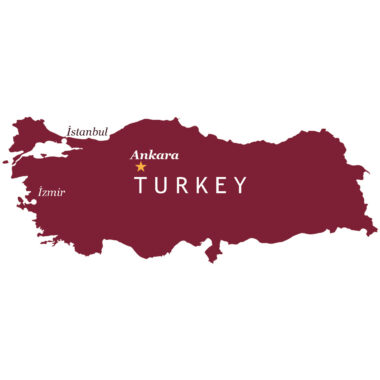
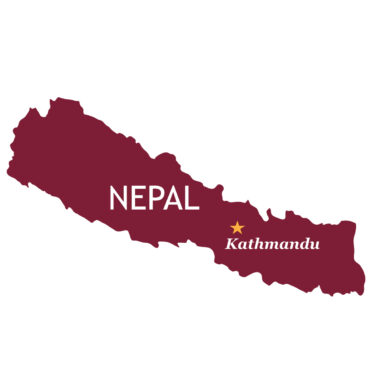
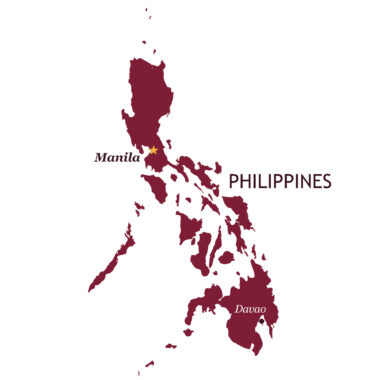


Have a Question/Comment?